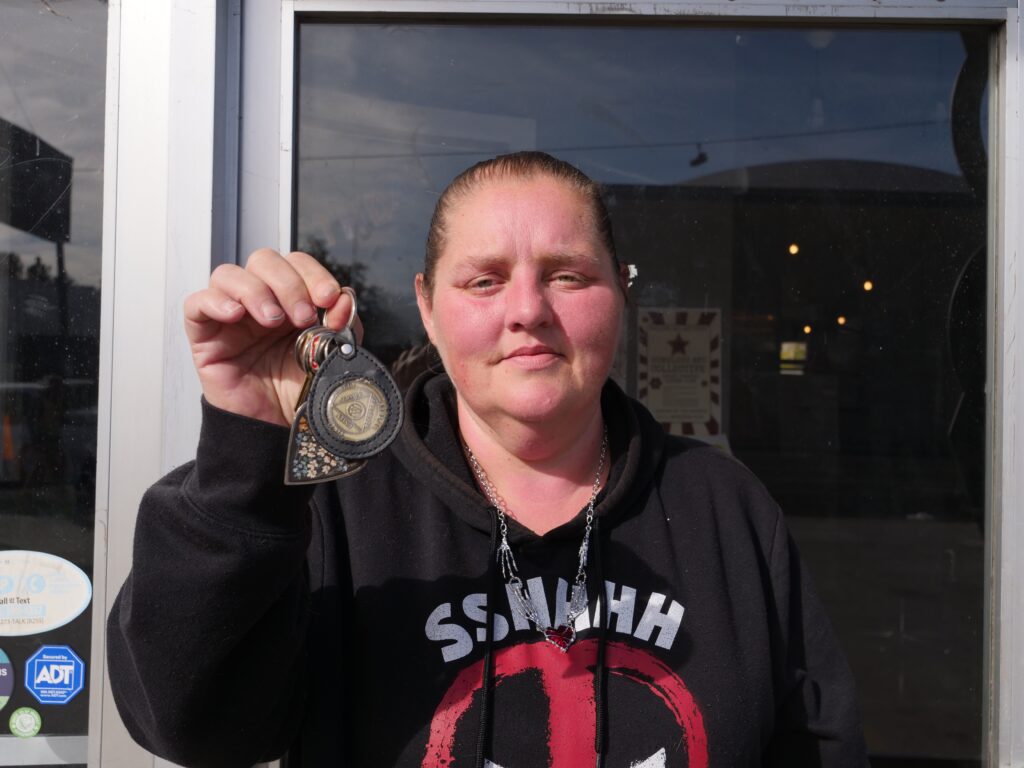By Molly Balison

Word on the Street Issue 49, November 2024
…
Viola Crowley never expected to be forced out of her home. In the blink of an eye she found herself bouncing between her daughter’s house in the day and Interfaith Sanctuary at night. Five years of homelessness led her to the resources that brought her stability and made a way for her to have a home again.
Crowley migrated to downtown Boise along with the 534 unhoused individuals in Ada County in 2019 in search of resources and hope.
Boise is equipped with a system of services to address the state of homelessness in our beautiful city. Five organizations are responsible for assisting the unhoused or preventing homelessness for those at risk.
Jesse Tree is the first stop in preventing homelessness by assisting families and individuals with rent when they’re at risk for being evicted. According to Jesse Tree, over 90% of those being evicted experience an unexpected financial shortcoming that prevents them from affording their rent temporarily. It costs the nonprofit about $2,000 to keep a family housed and they provide rental assistance to about 100 families in the Treasure Valley per month. If individuals are still unable to stay afloat homeless shelters are the next stop.
Interfaith Sanctuary provides a bed for roughly 170 guests at their emergency shelter each night and provides programs during the day including Project Well Being and Project Recovery. The reward for guests participating in programs is the privilege of being inside the shelter during the day. This is a motivator for people including Crowley to stay consistent in bettering themselves.
“When I found out about the Well Being program, I thought ‘I want in. I want this. This is what I need.’ It wasn’t about the privileges anymore, it was about taking care of myself.” Crowley said.
When her untreated psychosis overtook her mind and she slipped into mania during her stay at the shelter, the support from the staff encouraged her to keep her mental health in check and keep fighting to stay on the path of healing. “Coming to groups keeps me grounded and the staff is amazing. I still use the things I learn to my advantage even though I’m housed,” Crowley said. “Interfaith sanctuary has done so much for me. It’s literally saved my life.”
Nicki Vogel, the Director of Project Well Being, connected Crowley with Catch to begin her next step in her journey out of homelessness.
Catch Inc. catches those who have fallen into homelessness due to unforeseen circumstances and connects them with resources they’re eligible for. The housing crisis hotline receives around 550 calls a month. Building relationships is important for making those in the homeless community feel supported, loved and welcome so Catch sends out a street outreach team to those who aren’t in shelters.
“The clients we serve are human beings with inherent dignity and worth who are experiencing homelessness.” Catch said on their website.
At the 2024 State of Downtown, Catch’s Executive Director Stephanie Day explained “Where you see rent rates increase and vacancy rates decrease, you will see homelessness increase…We are all living in a much different world than we were in 2019 serving way more people and seeing way more need than we ever had before.”
Crowley got on the permanent supportive housing voucher list and waited a year and a half for her name to make its way to the top. She had 3 months to act and on the last day before her voucher expired, she signed the lease on a trailer.
Her hope was restored, but the fight wasn’t over.
Crowley began seeking help for her physical and mental ailments at Terry Reilly is a health center that provides primary care, behavioral health, and other essential services to 40,000 people in the Treasure Valley.
“Taking care of the health of individuals in the homeless community enables them to get on their feet faster and healthier,” said Terry Reilly’s CEO Heidi Hart. “If you’re unhoused, your health is worse and it’s harder for you to be able to meaningfully take care of yourselves. Participating in the programs and services that are available [allows us] to help people move forward to contribute their best selves to the community.”
Through the continuum of services for housing and healthcare, there’s hope for people like Crowley to get back on their feet and pay it forward.
“I remember what it was like being at the shelter and coming to group and not having easy access to things.” She said, “So when I go places I get things excess — when allowed — and bring them here to share with people who don’t have easy access.”
